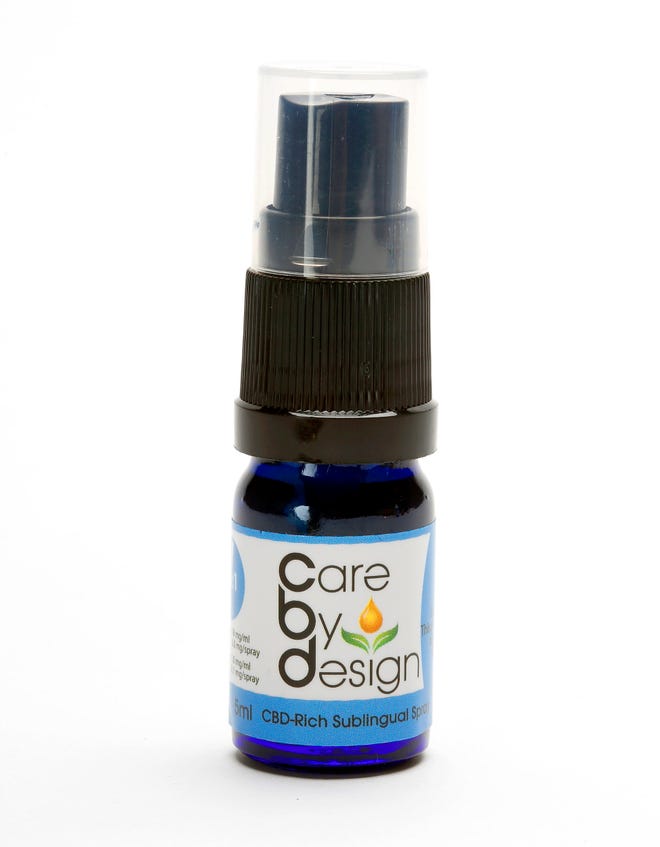Sublingual relief: From underground to under the tongue

When Sarah Wall was first diagnosed with rheumatoid arthritis 25 years ago, her doctors prescribed her various pharmaceutical drugs. But the Marin County resident, now 59, said none of them helped, and some even caused painful gastric problems. Eventually, Wall turned to cannabis, which she said gave her more relief than any medication. While she tried smoking, vaping, topical creams and edibles, she finally settled on under-the-tongue tinctures, called a sublingual, as her preferred medicine.
“It is much better than consuming edible cannabis, which is much harder to control the dosage and leaves me feeling stoned and groggy in the morning,” said Wall. She added that while she still smokes cannabis daily, she prefers sublinguals to all other methods, calling them miraculous for their ability to relieve pain quickly.
Although not as common as smoking or ingesting, sublingual delivery is gaining in popularity among medical and recreational users alike because it doesn’t require the inhalation of smoke or vapor. Sublinguals come in a variety of forms, primarily tinctures and sprays, but they all rely on the same mechanism: absorption through the mucosal membranes under the tongue, where the plethora of capillaries provides a more direct route to the bloodstream.
Bonni Goldstein, a medical cannabis physician in Lawndale (Los Angeles County) who treats patients using sublingual products, says their effects depend on how long a person lets them absorb. “It is difficult to measure how much is absorbed, as some of the product will be swallowed,” she said.
But she pointed out that studies of the sublingual spray Sativex — which is approved for use in Europe to treat spasticity, neuropathic pain and other symptoms of multiple sclerosis — show “excellent bioavailability if the liquid is held under the tongue and allowed to absorb.”
According to Goldstein, sublingual effects begin 15 minutes to an hour after application — faster than edibles, which take about one to three hours to take effect, but slower than inhaling. The duration of sublingual effects varies, but they can last between six and eight hours, she said.
That’s longer than smoking, notes Shannon Hattan, co-creator of sublingual tincture maker Fiddler’s Greens in Sonoma County. “The research is showing that you’re getting more consistent balance in your system versus smoking, where it kind of spikes within the first one to two hours,” she said. She added that tinctures can be taken several times a day — “the same way you would take Advil or something.”
Sublinguals are usually made from a base of alcohol or oil — coconut, olive and the man-made fats known as medium-chain triglycerides are popular choices — and contain the active ingredients in cannabis called cannabinoids, such as tetrahydrocannabinol (THC) or cannabidiol (CBD). Sometimes other herbal medicines or flavorings are added. A few drops or sprays are put under the tongue and held there for around 30 seconds.
While more research on sublinguals is needed, current studies point toward their efficacy. They’re also an easy, discreet alternative to smoking and vaping.
Nationally, edibles continue to be more popular than sprays and tinctures, but in California, sublinguals rank higher in terms of interest, according to a recent Cannabis Brand Study conducted by Canna Ventures, a marketing and branding agency.
“As smoking has become less socially acceptable, cannabis consumers are looking for alternative experiences to smoking a joint, using a bong or pipe,” the study’s authors wrote.
As Wall points out, they are “a great way to get quick pain relief without having to smoke cannabis, and it gives you very specific control over how much you need.”
Emily Earlenbaugh is a cannabis patient consultant and wellness researcher. Read detailed reviews of sublinguals and sprays at www.GreenState.com
